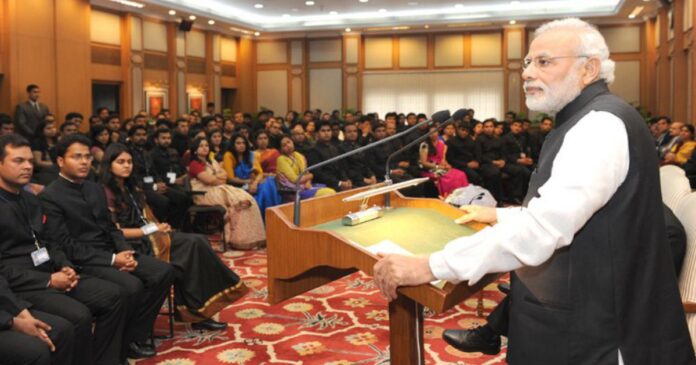One of the main arguments in favor of lateral entry is that it allows the government to tap into the pool of professionals who have specialized knowledge and skills in various domains, such as technology, management, finance, and others, where the government might lack expertise

Amit Pandey
The recent decision of the government of India to appoint 25 specialists from the private sector as joint secretaries, directors, and deputy secretaries in various ministries has sparked a debate on the merits and demerits of lateral entry in the Indian bureaucracy. This is not the first time that the government has resorted to such a move. In 2019, nine lateral entrants from the private sector were inducted in similar positions. The government has justified this move as a way to bring in fresh talent, expertise, and efficiency in the administration, and to overcome the shortage of officers at the senior and middle levels. However, the critics of this move have raised several questions and concerns about the rationale, process, and impact of lateral entry.
One of the main arguments in favor of lateral entry is that it allows the government to tap into the pool of professionals who have specialized knowledge and skills in various domains, such as technology, management, finance, and others, where the government might lack expertise. For instance, the appointments of economists like Manmohan Singh, Vijay Kelkar, and Bimal Jalan in the past were lateral in nature and they contributed significantly to the economic reforms and policies of the country. Lateral entry also provides an opportunity for the stakeholders from the private sector and non-profits to participate in the governance process and bring in new perspectives and innovations. Moreover, lateral entry can help in breaking the monopoly and complacency of the career bureaucrats who often resist change and reforms.
On the other hand, one of the main arguments against lateral entry is that it undermines the merit and integrity of the civil services, which are based on a rigorous and transparent examination process. The critics of lateral entry allege that the selection and appointment of lateral entrants is arbitrary, opaque, and prone to political interference and favoritism. They also point out that there is no reservation or representation of the marginalized sections of the society in these appointments, which goes against the constitutional principle of social justice. Furthermore, lateral entry can create conflicts and tensions between the career bureaucrats and the lateral entrants, who might have different values, work cultures, and loyalties. Lateral entrants might also face challenges in adapting to the complex and dynamic environment of the government, and in dealing with the political pressures and accountability.
An issue that has been brought up is the government’s decision to allow professionals from the private sector and other domains to enter the bureaucracy at senior and middle levels. This move has been advocated as a means to bring in fresh talent, expertise, and innovation into a civil service that is often seen as rigid and resistant to change. However, critics argue that this could undermine the merit-based and transparent recruitment process of the UPSC, which ensures the impartiality, accountability, and integrity of the bureaucracy. Concerns have also been raised about the reservation policy, political influence, and loyalty of these lateral entrants.
Another issue is the performance and conduct of political leaders and civil servants in different states. Many examples provided show the diversity and complexity of the Indian political and administrative system, where different actors have different roles, responsibilities, and ideologies. Some are praised for their honesty, courage, and efficiency, while others are accused of corruption, nepotism, and inefficiency. These examples highlight the need for a balance between the autonomy and accountability of civil servants and political leaders, as well as the need for cooperation and coordination among different levels and branches of the government.
The new education policy introduced by the government, which aims to transform the Indian education system to meet the needs of the 21st century. One feature of this policy is the promotion of the use of national languages, particularly Hindi, as the medium of instruction and assessment in schools and higher education institutions. While some see this as a way to preserve and promote linguistic and cultural diversity, as well as to make education more accessible for marginalized sections, others argue that it imposes Hindi on non-Hindi speaking regions and disadvantages students who prefer English or other foreign languages for higher education or competitive exams. Critics also question the feasibility and quality of implementing this feature due to limited resources, infrastructure, and trained teachers.
The root issue concerns the role of the private sector and corporates in the Indian economy and society. There are concerns about the loyalty and ethics of private sector professionals joining the bureaucracy, as well as the impact of the corporate sector on the banking system and public welfare. However, it is important to consider that the private sector and corporates have also contributed to development and innovation in various sectors, such as health, education, agriculture, energy, and technology. Public-private partnerships have also enhanced the efficiency and effectiveness of public service delivery and governance. Thus, a balanced perspective is needed, with proper regulations, checks, and balances to prevent misuse or abuse of power and resources.
Therefore, the issue of lateral entry in the Indian bureaucracy is not a simple one. It has both advantages and disadvantages, and it requires a careful and balanced approach. The government should ensure that the recruitment procedure of lateral entrants is fair, transparent, and inclusive, and that they are given adequate training and orientation to perform their duties effectively. The government should also monitor and evaluate the performance and impact of lateral entrants on a regular basis, and take corrective measures if needed. Lateral entry should not be seen as a substitute or a threat to the civil services, but as a complementary and collaborative measure to enhance the quality and efficiency of the administration.


